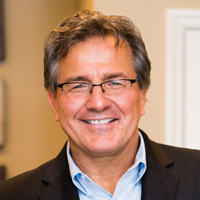Ways to Keep More of Your Money in Retirement
No one likes paying taxes, especially once you've retired. So here are some steps to consider now that could help minimize your taxes later.


Although you can’t control all the challenges you might encounter as you move toward and through retirement, having a well-thought-out plan can help you be better prepared. That’s especially true when it comes to two of the biggest risks to a confident and successful financial future: market volatility and taxation.
Market volatility can happen when the market reacts to news, such as when interest rates change. If those up-and-down movements make you nervous, it may mean your diversified portfolio isn’t set to a mix that fits with your risk tolerance, and it’s time to talk to your financial professional about making some adjustments.
While you’re at it, you should get the ball rolling on a plan to control taxes, which could be an even bigger threat to your income in retirement. Given the tax environment we’re in right now and the potential tax environment we could see in the future, it’s important to truly diversify your portfolio so that you don’t own too many assets that are taxed in the same way or are taxed at the same time.

Sign up for Kiplinger’s Free E-Newsletters
Profit and prosper with the best of expert advice on investing, taxes, retirement, personal finance and more - straight to your e-mail.
Profit and prosper with the best of expert advice - straight to your e-mail.
Ways to divide your assets
To do that, it helps to picture three buckets holding your investments.
- There’s the “taxed-now” bucket, which can include earnings, wages, non-qualified brokerage accounts, checking and savings accounts, investments that earn interest and dividends and capital gains.
- There’s the “taxed-later” bucket, which is made up of 401(k)s, traditional IRAs and other tax-deferred retirement accounts, but also real estate and maybe some hard assets or collectibles.
- And there’s “the taxed-rarely-or-never” bucket, which includes Roth IRAs and Roth 401(k)s, health savings accounts (HSAs), municipal bonds and certain types of life insurance.
If you’re like a lot of savers, you probably have most or all your investments in that middle bucket — the taxed-later bucket — and that could be a problem. Here’s why: Those accounts served you well by saving you on taxes every year while you were working, but when you start tapping into them in retirement, the money you withdraw will be taxed as ordinary income. Or, as I often tell my clients: Getting money into a retirement account is easy. Getting money out of that retirement account can be challenging and expensive.
Problems with the 'taxed-later' bucket
Let me explain. Those tax-deferred accounts include a debt people often forget. Here’s a good way to look at it:
If you own a house, and it’s worth $500,000, but you still owe $200,000 on the mortgage, you know you don’t have a $500,000 asset. You have a $300,000 asset. In the same way, if you own a 401(k) worth $500,000, the money in there isn’t all yours. You owe a good portion of it to the IRS, which has been waiting for payment for years. The taxed-later bucket is a tax-postponement retirement plan.
As soon as you start taking your share of the money, the IRS is going to want its share as well. Even if you decide not to withdraw the money because you don’t need it — maybe your Social Security benefits and pension have you covered — the IRS is going to require you to take minimum distributions (RMDs) starting at age 73.
Those distributions could bump you into a higher income tax bracket and possibly cause you to have to pay taxes on a higher portion of your Social Security benefits. You might even have to pay more for your Medicare Part B and D premiums. Add to that the risk that if you’re drawing money from your investments in a market downturn — whether it’s necessary for income or RMDs — you could end up with far less money to live on in your later years. This could have a devastating effect on your lifestyle.
Let me ask you a couple of questions: Would you borrow money from a bank if it didn’t disclose in advance what the interest-rate charge was going to be over the life of a loan? Has the IRS disclosed how much it can charge you in taxes over your entire lifetime? This is the challenge with the taxed-later bucket!
Another thing to consider is a new rule that requires most non-spouse beneficiaries to draw down inherited retirement accounts within 10 years of the original owner’s death, instead of letting heirs spread out their distributions over a longer time in what’s known as a “stretch” IRA. If you planned to leave your tax-deferred account to your children, you might just be handing over a tax burden along with it.
Is it time for a Roth IRA conversion?
The good news is it’s never too late to make changes that can help save you money and better preserve your retirement. There is no better time than now to get those changes underway because the Tax Cuts and Jobs Act (TCJA) has reduced tax rates through December 31, 2025. By converting the money from your tax-deferred retirement accounts to an after-tax Roth IRA or similar-type plan and paying the taxes on the money as you go, you can get rid of the debt you owe to Uncle Sam now for what is almost certainly a lower cost overall than what you would pay in retirement.
It’s unclear whether the TCJA reforms will sunset — the new Trump administration has indicated a desire to extend them, but Congress might not have the needed votes. The current top rate is 37% for those whose taxable income is over $626,350 (individuals) or $751,600 (married filing jointly). For two of the middle tax brackets, the current rates are 22% and 24%. Historically, rates have been much higher. In 1944, the top federal rate peaked at 94%. And in the 1950s, ’60s and ’70s, the top rate remained high, never dropping below 70%.
This is an opportunity to start converting your assets by diversifying your portfolio into a more tax-efficient investment model. In a world filled with what-ifs and uncertainty, it’s a positive step you can take to protect your retirement dream.
Kim Franke-Folstad contributed to this article.
The appearances in Kiplinger were obtained through a PR program. The columnist received assistance from a public relations firm in preparing this piece for submission to Kiplinger.com. Kiplinger was not compensated in any way.
Investment advisory products and services made available through AE Wealth Management, LLC (AEWM), a Registered Investment Adviser.. Safe Money Financial Solutions LLC is our name and it does not promise or guarantee investment results or preservation of principal. Insurance products are offered through the insurance business Safe Money Financial Solutions, LLC. Retirement Planning & Investment Solutions, LLC. is also an Investment Advisory practice that offers products and services through AE Wealth Management, LLC (AEWM), a Registered Investment Adviser. AEWM does not offer insurance products. The insurance products offered by Safe Money Financial Solutions, LLC. are not subject to Investment Advisor requirements. Safe Money Financial Solutions, LLC is not affiliated with the U.S. government or any governmental agency. Neither the firm nor its agents or representatives may give tax or legal advice. Individuals should consult with a qualified professional for guidance before making any purchasing decisions. Please remember that converting an employer plan account to a Roth IRA is a taxable event. Increased taxable income from the Roth IRA conversion may have several consequences. Be sure to consult with a qualified tax advisor before making any decisions regarding your IRA. The appearances in Kiplinger were obtained through a PR program. The columnist received assistance from a public relations firm in preparing this piece for submission to Kiplinger.com. Kiplinger was not compensated in any way. 02775021 - 01/25
Related Content
Get Kiplinger Today newsletter — free
Profit and prosper with the best of Kiplinger's advice on investing, taxes, retirement, personal finance and much more. Delivered daily. Enter your email in the box and click Sign Me Up.

As an Investment Adviser Representative and founder of Retirement Planning and Investment Solutions LLC (www.freshstartplans.com), Ronald Anno focuses on creating tax-efficient retirement plans that help people achieve their financial goals and strives to ensure they won't run out of money during retirement.